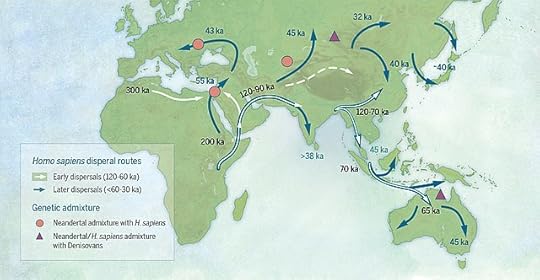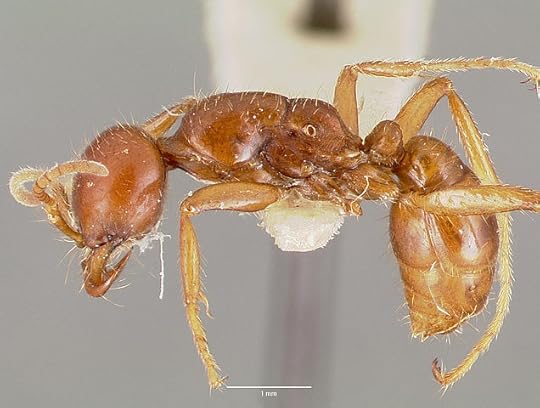Kate Rauner's Blog, page 13
November 19, 2022
Closer to a Moon Landing #OrionSpacecraft
NASA’s Orion spacecraft, a ship intended to carry a crew sometime soon, had a successful launch on its trip to orbit the Moon. This is a test of the systems, so Orion will perform some intricate orbital acrobatics over the next three weeks, coming within 60 miles of the Moon’s surface at one point, and swinging out 40,000 miles at another.
If you missed the launch, here it is. Look at those solid rocket boosters!
The spacecraft should return home on December 11, at which time it will need to survive atmospheric reentry and a splashdown in the Pacific Ocean… When all is said and done, Orion will have traveled 1.3 million miles (2.1 million kilometers)—the longest distance ever traversed by a crew-rated capsule. But that’s not all, as Orion will set records for remaining in space longer than any other crew-rated spacecraft without docking to a space station and for being the hottest and fastest crew-rated capsule to hit Earth’s atmosphere. [All without a crew on board, since this is a test flight.] Gizmodo
 Orion will also take pictures, and plans to emulate this classic Apollo 8 picture of Earth rise over the lunar surface. Find more from NASA on the cameras, click here: https://www.nasa.gov/feature/nasa-s-artemis-i-cameras-to-offer-new-views-of-orion-earth-moon
Orion will also take pictures, and plans to emulate this classic Apollo 8 picture of Earth rise over the lunar surface. Find more from NASA on the cameras, click here: https://www.nasa.gov/feature/nasa-s-artemis-i-cameras-to-offer-new-views-of-orion-earth-moonWill astronauts step boots on the Moon once again in this decade? It’s an exciting plan. In the meantime, you can only go to the Moon in science fiction. Join a young pilot on the Moon, in orbit, and on the Earth in my latest trilogy. Hurry up and read the books before real-life overtakes the story.

Humanity’s future in space depends on audacious pilots, and it may help if they’re a little crazy.
Winnie Bravo is brash, reckless, and more than a little annoying as she careens from adventure to adventure, determined to prove herself.
She pursues a nefarious space probe and a scoundrel who will stop at nothing. What she discovers may get her killed, or worse, fired.
If you love traveling to the future for rollicking adventure, you won’t be able to put Winnie’s story down.
November 18, 2022
Catnip Works for (Most) Cats, but not so much for humans #Caturday #cat #science
Catnip gives about 80% of cats a “high,” and it’s the only recreational drug society sanctions for your pet.
The plant produces a chemical called nepetalactone in microscopic bulbs that coat its leaves, stems, and seedpods. When these fragile bulbs rupture, they release the nepetalactone into the air. The chemical binds to receptors inside a cat’s nose… to alter activity in several areas of the brain, including [an area] involved in regulating the animal’s emotions.
Catnip produces a very definite, repeatable response. A cat will pretty much do the exact same thing every time it smells it. The cat isn’t rubbing their face and rolling in the catnip to get more of it, but simply because getting high by inhaling the catnip compels them to do so. vox.com
Studies (by scientists and by myself, using my own kitties) show that not all cats appreciate catnip. Some look at you with a puzzled but tolerant expression as you wave catnip under their noses. And, despite the implication in the Vox article that drugs for humans effect all people, I also know for a fact that some recreational drugs do nothing for some people. (So I’m told, by reliable sources.)
But no matter your predispositions, it seems catnip won’t send humans on a trip:
As far back as the 1600s, Europeans used the plant as a mild sedative, brewing tea with its leaves, making juice from them, and even smoking or chewing them. At various times, the plant was believed to cure colic in infants and excessive flatulence, hives, and toothaches in adult. vox.com
I bet there’s one question popping into your mind about now: if my kitty cats love catnip, what about their wild cousins? There’s a You Tube for that. (Of course there is.)
Hey, all you citizen scientists. As compelling as this video is, what would you need to add to make a better experiment? A control! Give a bag of non-catnip dried weeds to these cats too (after they recover) and record their reactions. Makes a better experiment, though probably not a better video. But you could try the experiment on your own pet cat.November 4, 2022
Surgery… 31,000 years ago #archeology #surgery #ancienthistory
What do we know about ancient medicine – especially, surgery? A bit more than before. An ancient child lost a foot and lower leg, and lived for at least six years afterward. What is especially surprising is the age of the skeleton.
We’ve thought until now that the practice of medicine was stimulated by the emergence some 10,000 years ago of settled societies. The theory goes that new health problems, unknown to non-sedentary foraging populations, pushed changes in medicine, including more advanced surgical procedures. The previous record holder was [a skeleton from] 7,000 years ago, but a new discovery is causing a major re-think. Craig Good in the Skeptoid Podcast Companion
This new find in an intentional burial, excavated in East Kalimantan (Indonesian Borneo,) is dated at 31,000 years ago.
 We humans sure liked to move around! Map of major migration routes, Science 2017
We humans sure liked to move around! Map of major migration routes, Science 2017The distal third of TB1’s lower leg was removed through deliberate surgical amputation… Non-surgical amputations, commonly as a result of accidents, do not cause clean oblique sectioning and are not clinically recorded to sever the lower limb of both the tibia and fibula, as is the case for TB1. Blunt-force trauma from an accident or an animal attack typically causes comminuted and crushing fractures, features that are absent from the clearly simple and oblique amputation margin of TB1. Nature.com
I would guess that hunters understood the detailed anatomy of their prey, and so could have extrapolated from animal to humans. How often such an extreme treatment might have been attempted, and how often the patient might have survived, is unknown.
Would we have recognized the child and their community as “us?” Modern humans emerged well before this time, about 300,000 years ago, and seemed to have cognitive traits like you and me by 60,000 years ago (and maybe long before.) Wikipedia.
I don’t like imagining what the child must have endured, but they survived, and someone must have cared for them. It’s truly a remarkable thought. If we can identify with our ancestors, maybe we can identify a bit more with other people alive in the world today.
October 31, 2022
Small Town Trunk ‘n Treat #HappyHalloween
Bayard, New Mexico. I had a great time at a trunk ‘n treat in a local park. Candy for the kids and costumes for young and old.
The weather was perfect. I remember trick-or-treating around sunset as a kid, and being so annoyed at my mother for making me wear a coat over my costume. This was much better. Happy Halloween 2022.
 Candy drop in the school field
Candy drop in the school field

 Costumes!
Costumes!
 Entertainment from a local dance group
Entertainment from a local dance groupHappy Halloween 2022
October 28, 2022
What Goes on in a Writer’s Mind? #author #Readers #iamreading

What if a reader sneaked into a writer’s lair? Here’s a satirical look at writing and reading, inspired by a 1960s TV show. Read my very-short story on Amazon’s Vella for free: Click here now.
Do you recognize the TV show? I’ve been semi-binging the series on MeTV, hoping to study its use of a “straight-man” (to use the old term from classic comedy teams) surrounded by comic characters (or “stooges.”) The TV show presents action within a situation, so the comedy-team analogy isn’t perfect, but I’m watching how reactions make comedy. (Or, for those of you who are also writers, how sequels make scenes. If that makes no sense, count yourself lucky to have escaped the fiction-writing bug.)
Do you recognize the TV show? Let me know in the comments below. Even if someone else has guessed it, I’d like to know what you have to say. As I’m learning, that’s what makes a piece. Also, if you feel generous, please leave a review on the Vella site.
October 22, 2022
Trash is Only One Problem Facing Martian Colonists #science and #scifibooks
NASA has a project manager for trash – of course it does.
There’s a lot of problems with space [trash] because we’ve got limited power, volume, and mass. You also want to be able to take the liquids out and process those or reuse it.” One project NASA is working on right now is a compaction system that could turn astronaut garbage into tiles that can be used for practical applications like radiation shielding. Steve Sepka talking to The Daily Beast
Right now, today, we drop debris without much worry, aside from trying to avoid contamination with earthly lifeforms.
In fact, we’ve dumped an estimated 15,694 pounds of trash on Mars from the past 50 years of exploration alone. And even that’s tiny in comparison to the whopping 400,000 pounds of garbage including materials, rovers, rocket boosters, and assorted national flags we’ve left behind on the moon. The Daily Beast
Reuse and recycle becomes a key factor in human missions to Mars because it’s so costly to send materials to the planet, and that’s not all. More exciting problems face a real-life Mars colony.
How many tools and resources could colonists afford to take with them? How long will those last and how will they be replaced? What resources can settlers extract from the planet, and how will they produce the necessities of life on a deadly world? How many hours a day would you work if your life depended on it? An article in Nature tackles the problems:
From a practical point of view, it is not clear how many years it would take to achieve a reasonable level of self-sufficiency, how many rockets would be required to send resources and goods and what would be the way of life and the organization of society… If a slow settlement process is already a great challenge, what if time and payloads were constrained and the objective was the long term survival of the group without help from Earthlings?
Logically speaking, from an engineering standpoint, survival can be simply expressed as follows: $$working\,time\,requirements < working\,time\,capacity$$ Nature

You don’t need to do the math. A scientist figured it out for you – the minimum number of individuals needed in a colony for survival on Mars is 110. Read the article to see how that’s calculated and lots more details. Or, join my science fiction colony. (Better yet, do both.)
Take a marvelously detailed journey into the near-future. Colonists cling to humanity’s first fragile foothold on the Red Planet and struggle on through generations, battling the deadly planet and each other. Because no matter how noble the aspirations, how alluring the technologies, survival requires individual intelligence, ingenuity, and courage.
In these five full-length novels exploring a colony on Mars, join a different settler in each book in a creative mix of science and storytelling that nails it for realism. Someday, real settlers will tell tales like these.
October 20, 2022
Swarm Bots or Army Ants – Who’s Smarter? #nature #algorithms
“Interactions between members of a group can lead to extraordinarily efficient solutions or snowballing catastrophes.” While you might expect that to apply to groups of humans, (now that I think about it, I guess it does,) the quote comes from Swarm Lab, where scientists study swarm robotics (among other things, such as ants.) If ants, each with a minuscule brain, can create complex structures and behaviors, maybe robots can too.
 A collected army ant, because there doesn’t seem to be such a thing as a lone army ant in nature © AntWeb.org / CC BY-SA 3.0
A collected army ant, because there doesn’t seem to be such a thing as a lone army ant in nature © AntWeb.org / CC BY-SA 3.0Army ants live in large colonies, but have no permanent nests. They march through the jungle daily. When they come to a gap in their path, they build a bridge with their own bodies, and the group continues on. How do they do that?
Individual ants seem to decide based on a three-part algorithm – something that could be programmed into simple robots.
If you come to a gap in your path, slow down. (The ants behind you don’t know you’re stopping, so they keep marching along.)When you feel other ants walking on your back, freeze. (The ants on your back will do the same thing when they get to the end of your body and detect the gap, and so on and so on, until some ants reach the other side and keep walking.)When the weight on your back dips below some threshold (you don’t know it, but all your mates have crossed,) you rejoin the march. Quanta Magazine explains this, and also why they sometimes “choose” to go around a gap. Check out the article.That’s Collective Intelligence in Biological Systems. Ants don’t know they’re teaching us how to program robots. They’re just living the life they evolved to live. Information is all around us, and I’m glad some people are smart enough to notice.
October 14, 2022
Commercial Sq Footage in Space – Coming Soon [?] #space #orbit
The world’s largest hybrid space station for work and stay, featuring spacious microgravity modules, and a rotating Gravity Ring. Can it be true?
Science fiction has given us rotating habitats forever – I’ve done it myself. But Orbital Assembly is a real-life company aiming to place a 28-person station in orbit by 2025 with one-half Earth gravity provided. Since a job in space is likely to still be… a job… residents will need recreation. OA is forming a strategic collaboration with Dream Big World to develop the first terrestrial retail experience in space.
Note that word experience. Right now, they’re talking virtual. But this is also “The first of many real estate leasing deals we plan to sign as we develop and launch these tourist, industrial and commercial stations.” Orbital Assembly CEO Rhonda Stevenson.
Imagine yourself as an space tourist. You fly to an orbiting station. There are zero-g areas and half-g areas where you can play. Incredible views of Earth, the Moon, and stars beckon. You have (my guess) spent your life savings, so it’s your once-in-a-lifetime trip.
What do you want to do? Go shopping? Why? Did you forget your toothbrush? Need another tee-shirt? Did you bring a compact experiment in your luggage? Let us all know in the comments below.

Until OA’s station actually flies, you need science fiction to enter orbit. My new trilogy, Winnie Bravo, Space Pilot, includes a resort on the Moon. Yes, there is shopping for tourists, but Winnie is a newly minted pilot, and this is her story.
She’s brash, reckless, and more than a little annoying as she chases space junk through orbit. Capturing a stealth probe that’s destroying satellites seems the perfect way to demonstrate her talents, but the mysterious craft escapes. Now, someone at her corporation’s lunar base is willing to kill to stop her.
Read Winnie’s story today, before scifi turns into reality! Click here now.
October 11, 2022
Scifi Book Deal Even if You’re Not in Amazon Prime #scifibooks #sciencefiction #kindlebook
Prime members don’t have all the fun. My new scifi space adventure is free on Kindle for everyone on October 11 and 12th, Amazon Prime Sale Days.
Winnie Bravo, Space Pilot, Book 1
Lunar Base

Humanity’s future in space depends on audacious pilots, and it may help if they’re a bit crazy.
Winnie Bravo is brash, reckless, and more than a little annoying as she sets out to prove herself, careening from adventure to adventure with her partner Bertie never far away.
In orbit, across the Moon, and on Earth, she pursues the truth about a nefarious probe and a scoundrel who will stop at nothing. What she discovers brings her closer to the truth than she bargained for, and may get her killed, or worse, fired.
If you love traveling to the future for rollicking adventures, you won’t be able to put Winnie’s story down. Read Book 1 today and binge on through, because the complete trilogy is available.
Hurry to claim your free copy of Lunar Base, October 11 and 12 only.
October 6, 2022
Rarest of the Rare, but it can kill #medical #genetics
Rare and terrible, a newborn suffered a brain hemorrhage and died. Something was wrong with the baby’s blood – but what?
Researchers made a startling discovery: The mother had an ultrarare blood type, incompatible with her own baby.
I’ve gone through life with the simple notion that human blood can be A, B, O, or AB, and positive or negative. Wow, am I wrong.
 Lipid structure in red blood cell membranes
Lipid structure in red blood cell membranes[Studies] confirmed a new set of blood grouping—the “Er” system, the 44th to be described. “Discovering a new blood group system is like discovering a new planet. It enlarges the landscape of our reality.” Wired with my emphasis added
These alternate blood types are exceedingly rare – sometimes confined to a single family. Their red blood cells produce proteins different from the vast majority of people. Only the latest lab techniques make it possible to screen for these oddities. This may not effect you and me, but could be lifesaving for someone out there, somewhere.
Someone might have a preliminary blood test that reveals the presence of unusual antibodies. Doctors could send the blood for analysis, and it might turn out that they have rare blood. “We have our testing set up to be able to do that,” says Thornton. In the future, scientists in a lab might be able to grow red blood cells that could be offered to these patients for transfusion purposes. Wired
Blood types were discovered in 1900. What could be older science news than blood types? Or so I thought. Life is more complicated than I can imagine.
Thanks to the journal Blood.



